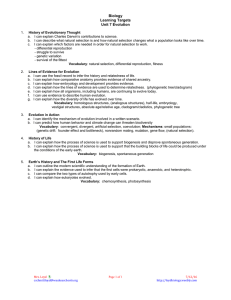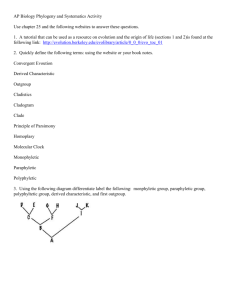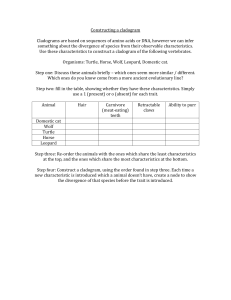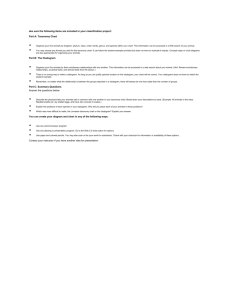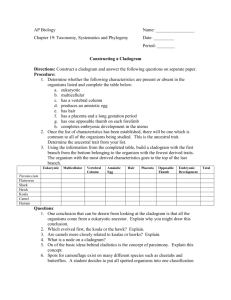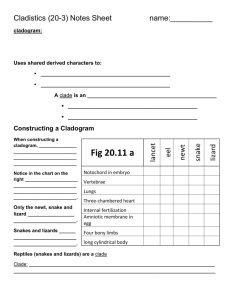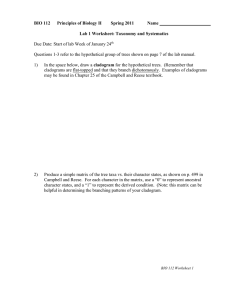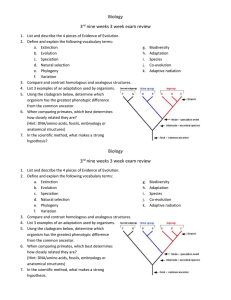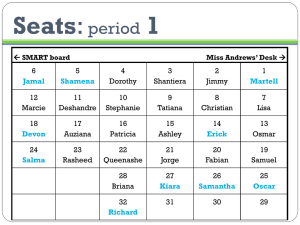Evolution Learning Objectives: Grade 9
advertisement
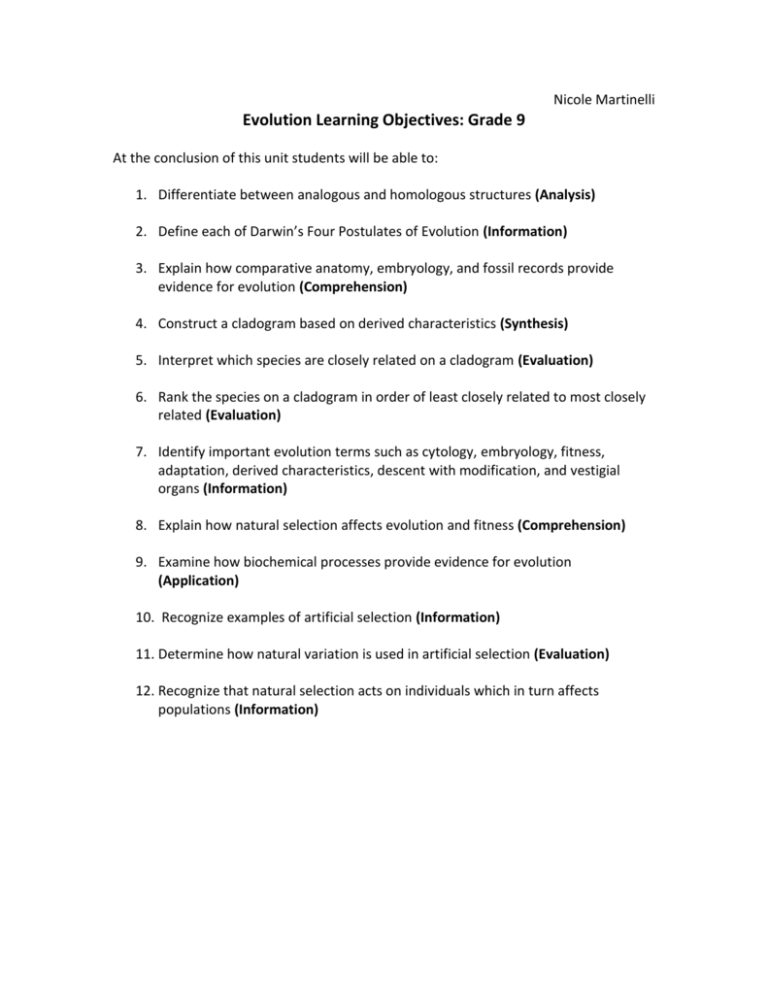
Nicole Martinelli Evolution Learning Objectives: Grade 9 At the conclusion of this unit students will be able to: 1. Differentiate between analogous and homologous structures (Analysis) 2. Define each of Darwin’s Four Postulates of Evolution (Information) 3. Explain how comparative anatomy, embryology, and fossil records provide evidence for evolution (Comprehension) 4. Construct a cladogram based on derived characteristics (Synthesis) 5. Interpret which species are closely related on a cladogram (Evaluation) 6. Rank the species on a cladogram in order of least closely related to most closely related (Evaluation) 7. Identify important evolution terms such as cytology, embryology, fitness, adaptation, derived characteristics, descent with modification, and vestigial organs (Information) 8. Explain how natural selection affects evolution and fitness (Comprehension) 9. Examine how biochemical processes provide evidence for evolution (Application) 10. Recognize examples of artificial selection (Information) 11. Determine how natural variation is used in artificial selection (Evaluation) 12. Recognize that natural selection acts on individuals which in turn affects populations (Information)
